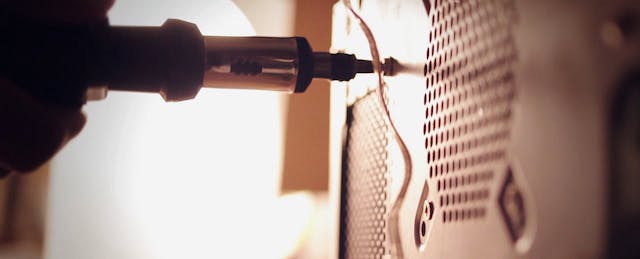This spring, moments before 1.8 million soon-to-be college graduates walk across stages with a diploma in hand, many will likely hear the words, “Don’t be afraid to fail.”
Nearly every motivational (or commencement) speaker makes reference to the idea of embracing failure. It’s become ingrained in educational culture and, even more so, in startup culture. The idea is that a fear of failure paralyzes people. By flipping this fear on its head—instilling a fear of not trying and then learning from your mistakes—we can motivate ourselves to try.
It’s a great idea, but even when people gave anecdotes of their own failures, it always seemed a bit too abstract to me. In my life, I’ve embraced this idea with a slight twist.
Break stuff.
When I was seven years old, I broke my parents’ only vacuum cleaner. Earlier that day, my dad had taught me how to use a screwdriver when I helped him tighten the hinges on the storm door. Armed with this knowledge, I took the vacuum cleaner out of the closet, pushed it to my room, and removed every screw. I put all of the belts, springs, gaskets, hoses, brushes, motor, and every other part I could remove in a pile on my bed (including the dust bag—filled with dirt, of course).
This particular vacuum cleaner happened to hold a bit of sentimental value to my parents as well. It was their first purchase as a couple. When my dad discovered what I’d done, he was understandably upset. He grabbed the repair manual from the closet and sat down to help me follow one of the most complex lego instruction manuals I had seen. I found nearly every screw. We ended up having to wait until the next day to get a couple replacement parts from the hardware store. While we were putting it back together, we cleaned the brushes and hoses and the vacuum cleaner ended up working better than before.
The idea of breaking stuff certainly isn’t new. Punk rockers have been doing it since I was born (I’m a child of the late 80s). And the larger idea of learning how something works by taking it apart is likely as old as human curiosity. Breaking stuff even seem to be instinctual. Building blocks wouldn’t be nearly as fun to play with if kids couldn’t knock their towers over afterwards.
Still, it’s an important lesson to be taught. It’s easy to fall into the trap of being overly cautious, especially with the things we own. I take the idea that you don’t truly own something unless you can modify it a step towards the philosophical - you don’t truly own something unless you can break it. It took me a while, but I eventually learned that breaking stuff is an excellent learning opportunity.
When my sister broke the battery case on my Gameboy, I was in tears. Once I regained my composure, I learned that, while not ideal, electrical tape does a decent job of holding the case together. When the family dog chewed up the cable to my Super Nintendo game controller, my dad taught me how to solder it back together. As a teenager, when I broke the end of an audio cable off in my bass guitar, and then broke the guitar’s connector trying to remove it, I took the entire guitar apart to fix it. I learned how the guitar’s pickups and electronics work, how the neck of the guitar attaches to the body, and how to repaint the body and put the it all back together.
These lessons carried over into my formal education as well. I studied computer engineering in college. There’s a commonly repeated joke in electronics that all electronics components work because they contain “magic smoke” and once you let it out, the magic is gone. I have accidentally set fire to plenty of parts throughout my schooling. Every spark and smell of burning electronics symbolized progress.
Nowadays when I set fire to a resistor or melt a wire, it’s usually on purpose. In my role as CTO of thimble.io, an electronics kit subscription company, a big part of my job is breaking stuff. It’s slowly even becoming part of our corporate culture. When we send a kit out, we want our makers to have a true learning experience. Kits that just snap together have their place, particularly in trying to get people interested in the world of electronics. But we don’t only want to spark their interest, we want people to learn. And to us, that means allowing them to make mistakes in a way they won’t get discouraged. So, we decided to make it very easy for people that purchase our kits to get replacement parts. And, just as I used the repair manual to put my family’s vacuum cleaner back together, we are building a learning app so that our makers can make and break with guidance.
Obviously, there needs to be some degree of caution to protect from injury, but I want to encourage everyone to not be afraid of breaking stuff.
Go out and break something. Then fix it. It’s truly a great way to learn.


